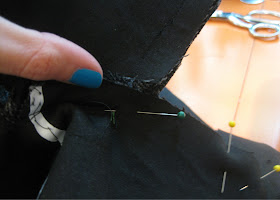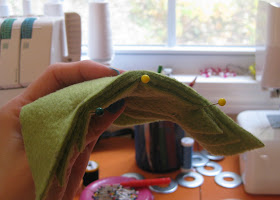woooooo!!!!!!
way back when i started planning out this coat, the style, fabric choices, etc... my oldest daughter (8 yrs old) was nosing over my shoulder and said: "what, are you making a sherlock holmes coat?" huh? no. well... oh... hmmm. see, i kind of became obsessed with all the sherlock holmes novels and stories this year along with the fabulous bbc tv show "sherlock" (seriously the best show ever. ever.). in the show, his classic trench coat is almost a character in and of itself, and i noticed that it has red buttonholes. which got me to thinking that i, therefore, needed pink buttonholes on my coat.
so i finished this little beauty off with some fancy hand worked buttonholes. i won't go into detail about them as i am by no means an expert. i don't have a keyhole button feature on my machine so i had to go with either bound or handworked. and since i wanted bright pink thread... handworked it had to be.
oh how naive i was. not only was it a challenge just to locate the right supplies, my research indicated that handworked buttonholes are a tailoring specialty. and having done a few, i can see why.
so i practiced and practiced and practiced my stitches. the thing is, using a contrasting thread color, every imperfection is highly visible. so as much as i just wanted to jump right in, i kept practicing until i had something passable. i have to say, i've kind of fallen in love with making them. so much so, that i didn't stop at the three buttonholes the pattern calls for, but added a lapel buttonhole and functioning buttonholes on the back tie.
while they are faaaaar from perfect, i love them. and i plan to order that giant spool of gimp so i can keep practicing, because there will be more of these in my future.
the only other detail i haven't shown here is my interior pocket. i had planned to show you how i made it and such, but i so badly botched the construction that i'm just happy it both functions and isn't terribly unsightly. seriously, i've made so many welt pockets over the years, why i screwed this one up so badly i will never know.
but, there you have it. you've seen every inch of this coat, inside and out, and i hope my extensive posting has been helpful. now i am soooo ready to make something quick and easy!
oh yeah, and i love it!!!
—lisa g.




























































